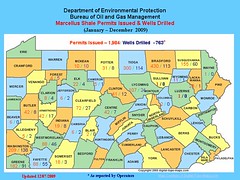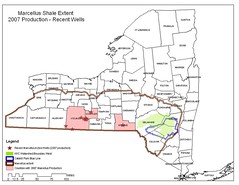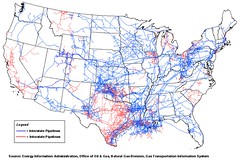The fallacy of climate activism
Posted 23 Aug 2009
on grist.org by Adam D. Sacks
(Editorializing in red by Splashdown)
In the 20 years since we climate activists began our work in earnest, the state of the climate has become dramatically worse, and the change is accelerating—this despite all of our best efforts. Clearly something is deeply wrong with this picture. What is it that we do not yet know?What do we have to think and do differently to arrive at urgently different outcomes?[1]
The answers lie not with science, but with culture.
Climate activists are obsessed with greenhouse-gas emissions and concentrations. Since global climate disruption is an effect of greenhouse gases, and a disastrous one, this is understandable. But it is also a mistake.
Such is the fallacy of climate activism[2]: We insist that global warming is merely a consequence of greenhouse-gas emissions. Since it is not, we fail to tell the truth to the public.
I think that there are two serious errors in our perspectives on greenhouse gases:
Global Warming as Symptom
The first error is our failure to understand that greenhouse gases are not a cause but a symptom, and addressing the symptom will do little but leave us with a devil’s sack full of many other symptoms, possibly somewhat less rapidly lethal but lethal nonetheless.
The root cause, the source of the symptoms, is 300 years of our relentlessly exploitative, extractive, and exponentially growing technoculture, against the background of ten millennia of hierarchical and colonial civilizations.[3] This should be no news flash, but the seductive promise of endless growth has grasped all of us civilized folk by the collective throat, led us to expand our population in numbers beyond all reason and to commit genocide of indigenous cultures and destruction of other life on Earth.
To be sure, global climate disruption is the No. 1 symptom. But if planetary warming were to vanish tomorrow, we would still be left with ample catastrophic potential to extinguish many life forms in fairly short order: deforestation; desertification; poisoning of soil, water, air; habitat destruction; overfishing and general decimation of oceans; nuclear waste, depleted uranium, and nuclear weaponry—to name just a few. (While these symptoms exist independently, many are intensified by global warming.)
We will not change course by addressing each of these as separate issues; we have to address root cultural cause.
Beyond Greenhouse Gas Emissions
The second error is our stubborn unwillingness to understand that the battle against greenhouse-gas emissions, as we have currently framed it, is over.
It is absolutely over and we have lost.
We have to say so.
There are three primary components of escalating greenhouse-gas concentrations that are out of our control:
Thirty-Year Lag
The first is that generally speaking the effects we are seeing today, as dire as they are, are the result of atmospheric concentrations of carbon dioxide in the range of only 330 parts per million (ppm), not the result of today’s concentrations of almost 390 ppm. This is primarily a consequence of the vast inertial mass of the oceans, which absorb temperature and carbon dioxide and create a roughly 30-year lag between greenhouse-gas emissions and their effects. We are currently seeing the effects of greenhouse gases emitted before 1980.
...
Positive Feedback Loops
...
We need to find the courage to say so.
Non-Linearity
The third component is non-linearity, which means that the effects of rising temperature and atmospheric carbon concentrations may change suddenly and unpredictably. ...
We don’t know where the tipping points—effectively the changes of state—are for such events as the irreversible melting of glaciers, release of trapped methane from tundras and seabeds, carbon saturation of the oceans. Difficult to pin down, tipping points may be long past, or just around the corner. As leading climatologist Jim Hansen has written, “Present knowledge does not permit accurate specification of the dangerous level of human-made GHGs. However, it is much lower than has commonly been assumed. If we have not already passed the dangerous level, the energy infrastructure in place ensures that we will pass it within several decades.”[4]
Evidence of non-linearity is strong, not only from the stunning acceleration of climate change in just the past couple of years, but from the wild behavior of the climate over millions of years, which sometimes changed dramatically within periods as short as a decade.
The most expert scientific investigators have been blindsided by the velocity and extent of recent developments, and the climate models have likewise proved far more conservative than nature itself. Given that scientists have underestimated impacts of even small changes in global temperature, it is understandably difficult to elicit an appropriate public and governmental response.
Beyond the Box
We climate activists have to tread on uncertain ground and rapidly move beyond our current unpleasant but comfortable parts-per-million box. Here are some things we need to say, over and over again, everywhere, in a thousand different ways:
Bitter climate truths are fundamentally bitter cultural truths. Endless growth is an impossibility in the physical world, always—but always—ending in overshot and collapse. Collapse: with a bang or a whimper, most likely both. We are already witnessing it, whether we choose to acknowledge it or not.
(—Mining the Alberta tar sands for oil, mountaintop removal for coal and deep well hydrofracking for natural gas all bear witness to that truth.)
Because of this civilization’s obsession with growth, its demise is 100 percent predictable. We simply cannot go on living this way. Our version of life on earth has come to an end.
Moreover, there are no “free market” or “economic” solutions. And since corporations must have physically impossible endless growth in order to survive, corporate social responsibility is a myth. The only socially responsible act that corporations can take is to dissolve.
We can’t bargain with the forces of nature, trading slightly less harmful trinkets for a fantasied reprieve. Geophysical processes care not one whit for our politics, our economics, our evening meals, our theologies, our love for our children, our plaintive cries of innocence and error.
We can either try to plan the transition, even at this late hour, or the physical forces of the world will do it for us—indeed, they already are. As Alfred Crosby stated in his remarkable book, Ecological Imperialism, mother nature’s ministrations are never gentle.[5]
Telling the Truth
If we climate activists don’t tell the truth as well as we know it—which we have been loathe to do because we ourselves are frightened to speak the words—the public will not respond, notwithstanding all our protestations of urgency.
And contrary to current mainstream climate-activist opinion, contrary to all the pointless “focus groups,” contrary to the endless speculation on “correct framing,” the only way to tell the truth is to tell it. All of it, no matter how terrifying it may be.[6]
It is offensive and condescending for activists to assume that people can’t handle the truth without environmentalists finding a way to make it more palatable. The public is concerned, we vaguely know that something is desperately wrong, and we want to know more so we can try to figure out what to do. The response to An Inconvenient Truth, as tame as that film was in retrospect, should have made it clear that we want to know the truth.
And finally, denial requires a great deal of energy, is emotionally exhausting, fraught with conflict and confusion. Pretending we can save our current way of life derails us and sends us in directions that lead us astray. The sooner we embrace the truth, the sooner we can begin the real work.
Let’s just tell it.
(This is precisely why we need the gas companies to disclose their proprietary formulas... for all that has gone on to now, that contributes to climate change and environmental degradation that subtracts from future potential quality of life, real work is chomping at the bit, demanding our serious attention and real solutions.)
To read the climactic (no pun intended ;) ending to Sack's thesis, including endnotes, CLICK HERE.
DEMAND ACCOUNTABILITY!



















No comments:
Post a Comment